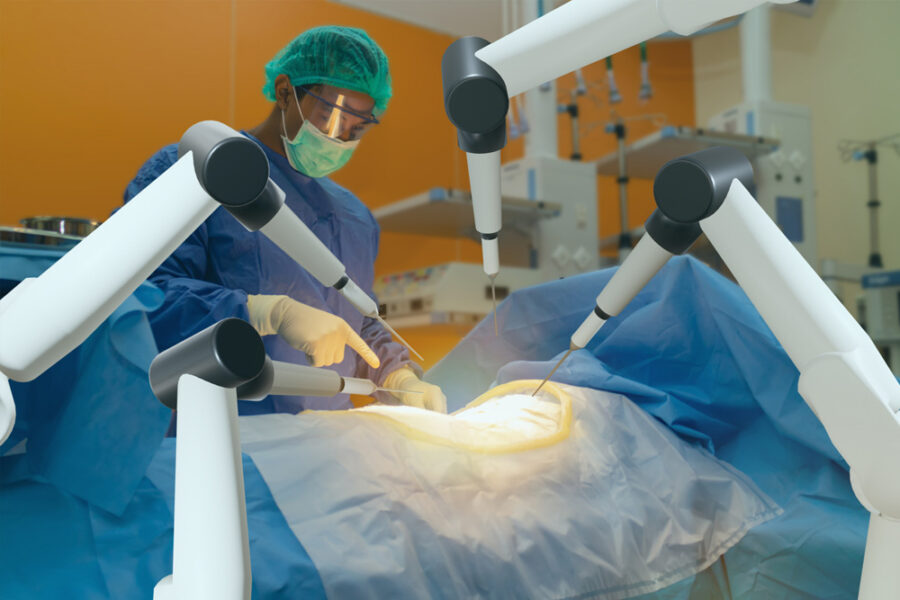
One of the most common cancers in men worldwide is
prostate cancer. Early detection means fewer complications and effective treatment. When the cancer is in its advanced stages, treatment gets multimodal, especially as the cancer spreads beyond the prostate gland into nearby tissues or distant organs. In the advanced stages, doctors advise a comprehensive treatment approach. Advanced prostate cancer requires carefully planned therapies that not only aim to control the disease but also improve quality of life.
Guide To Major Treatment Options For Advanced Prostate Cancer
Surgery
Surgery is the treatment option when the cancer is still localized. In certain selective advanced cases, surgery can still help
- Radical Prostatectomy – In this format, the prostate gland is completely removed. This procedure also involves the removal of some surrounding tissue and lymph nodes. Radical prostatectomy is less common in advanced cases.
- TURP or Transurethral resection of the prostate – This procedure is used for treating non-cancerous prostate enlargement or benign prostatic hyperplasia primarily but also used in the treatment of symptoms associated with advanced prostate cancer, to relieve symptoms such as urinary obstruction
- Orchiectomy or castration – The surgeon in this case removes testicles, though, this surgical method works as a part of hormone therapy.
Surgery in the case of advanced prostate cancer is often in combination with radiation or systemic therapies.
Radiation Therapy
Radiation therapy uses high-energy rays to target and destroy cancer cells. This procedure can help effectively in treating advanced prostate cancer.
- External Beam Radiation Therapy (EBRT) – This is the most common form, where radiation beams are delivered from outside the body to the prostate gland and surrounding areas. It can shrink tumors and improve urinary symptoms. It helps in the case of early-stage tumours. It is also advised if the cancer has spread to certain parts of the bone and causes bone pain.
- IMRT or Intensity Modulated Radiation Therapy – IMRT is an advanced form of 3D-CRT where specialised computers are used for locating the prostate tumour. An image-guided radiation therapy is used along with IMRT for creating pictures of the gland before treatment.
- SBRT or Stereotactic Body Radiation Therapy – This method also uses an advanced technique with image guidance to focus larger dosages of radiation to the prostate. It is also known as CyberKnife, X-Knife, Gamma Knife, and Clinac.
Hormone Therapy (Androgen Deprivation Therapy – ADT)
In this procedure, the level of male hormones or androgens is reduced, blocking their effects. LHRH Agonists like Leuprolide, Antagonists like Degarelix or Relugolix, Advanced androgen receptor pathway inhibitors like Abiraterone, Enzalutamide, Darolutamide block the action of testosterone on prostate cancer cells. A combination of both approaches is also used by doctors for stronger results.
Chemotherapy
In this case, strong drugs are used to kill cancer cells. In the case of advanced prostate cancer, Docetaxel based chemotherapy can extend survival and improve symptoms.
Targeted Therapy
Targeted therapies are designed to attack PARP Inhibitors to prevent cancer cells from repairing themselves, leading to their destruction.
Conclusion
Advanced prostate cancer might need a combination of treatments that the doctor will curate as per your condition, stage of cancer, and overall health. Surgery, radiation, hormone therapy, chemotherapy, and targeted therapy all play important roles in slowing disease progression and improving quality of life.
 One of the most common cancers in men worldwide is prostate cancer. Early detection means fewer complications and effective treatment. When the cancer is in its advanced stages, treatment gets multimodal, especially as the cancer spreads beyond the prostate gland into nearby tissues or distant organs. In the advanced stages, doctors advise a comprehensive treatment approach. Advanced prostate cancer requires carefully planned therapies that not only aim to control the disease but also improve quality of life.
One of the most common cancers in men worldwide is prostate cancer. Early detection means fewer complications and effective treatment. When the cancer is in its advanced stages, treatment gets multimodal, especially as the cancer spreads beyond the prostate gland into nearby tissues or distant organs. In the advanced stages, doctors advise a comprehensive treatment approach. Advanced prostate cancer requires carefully planned therapies that not only aim to control the disease but also improve quality of life.



